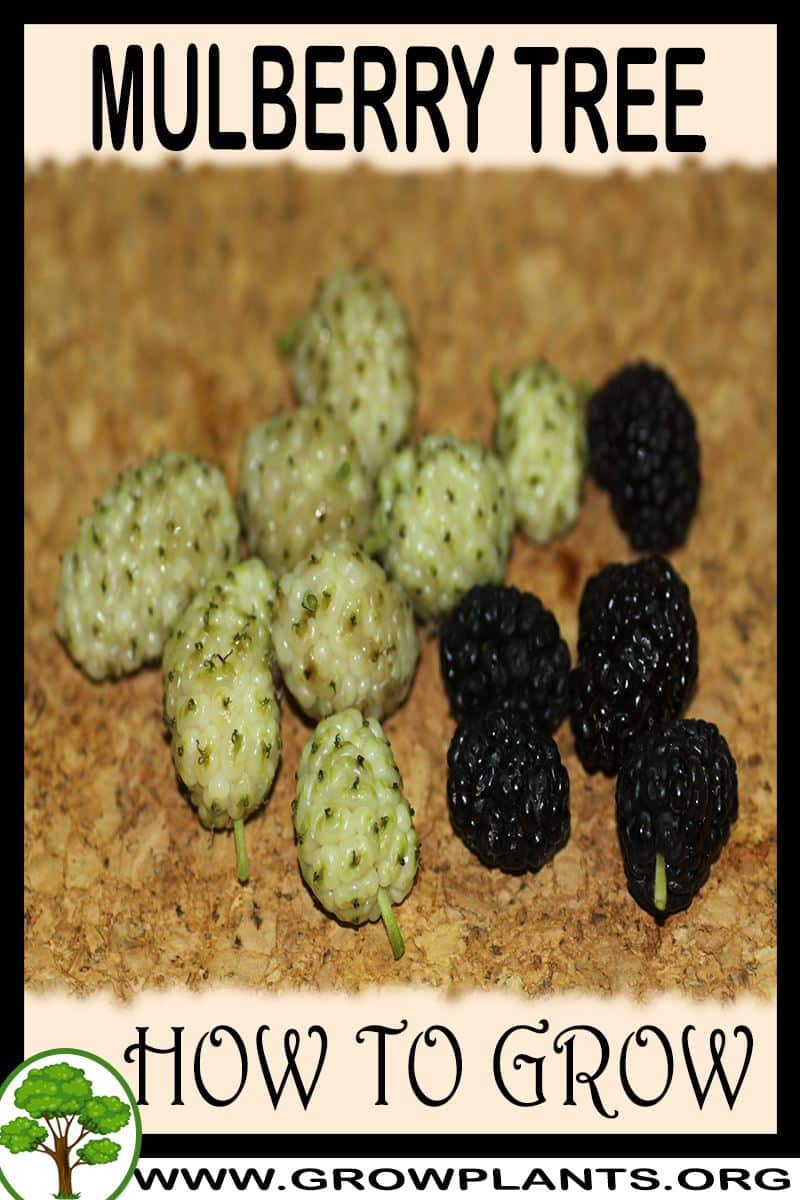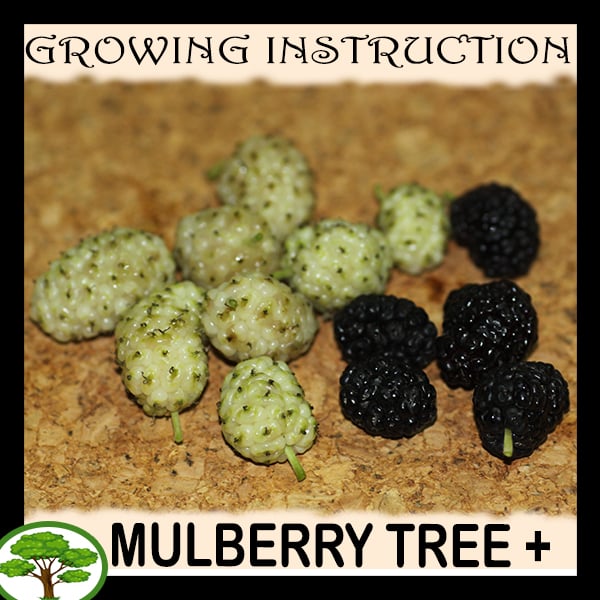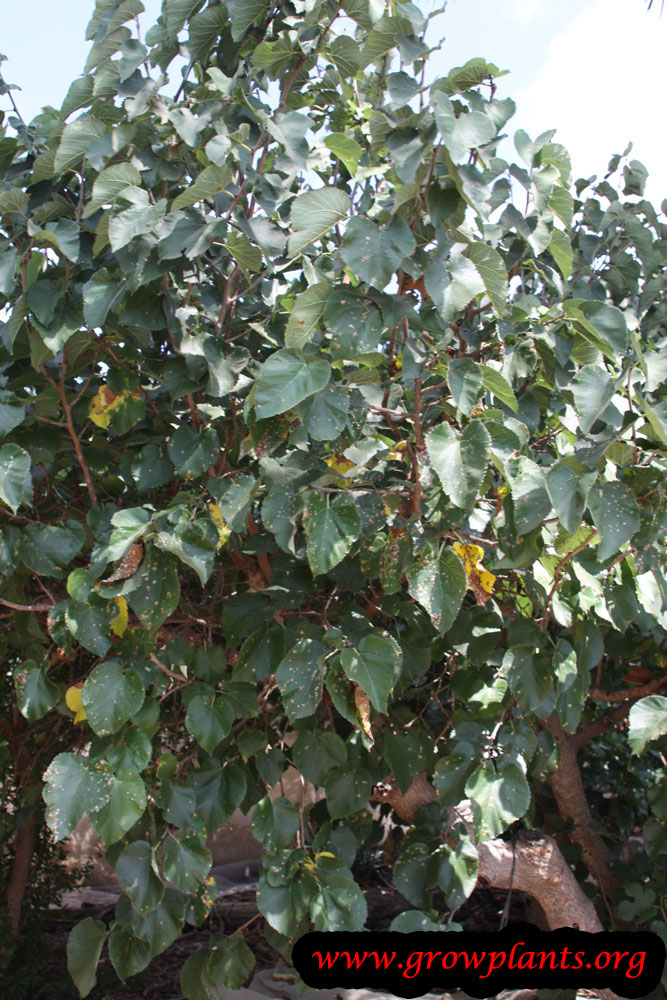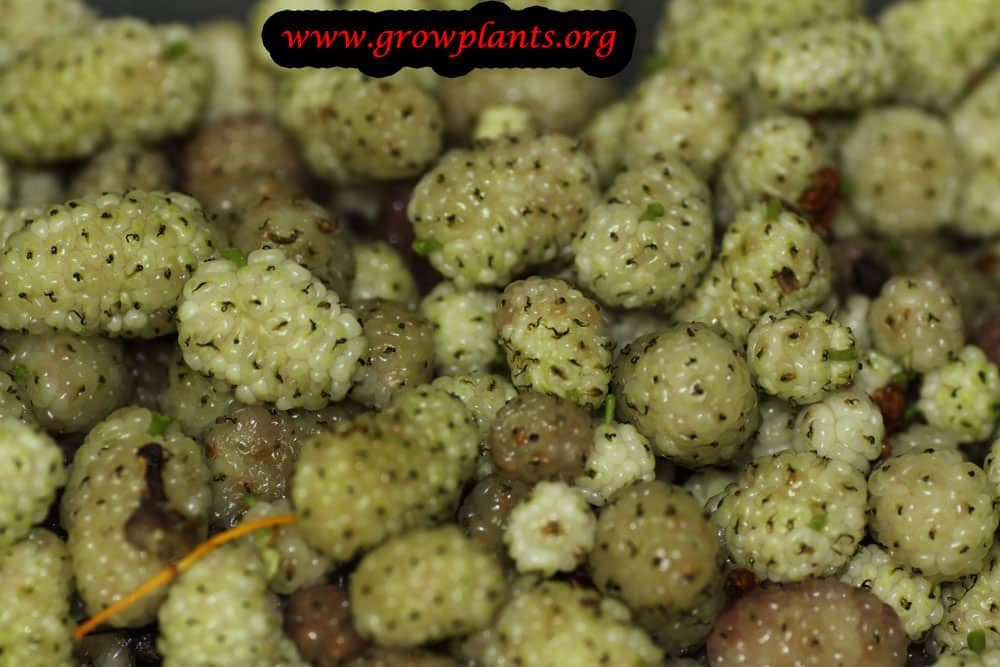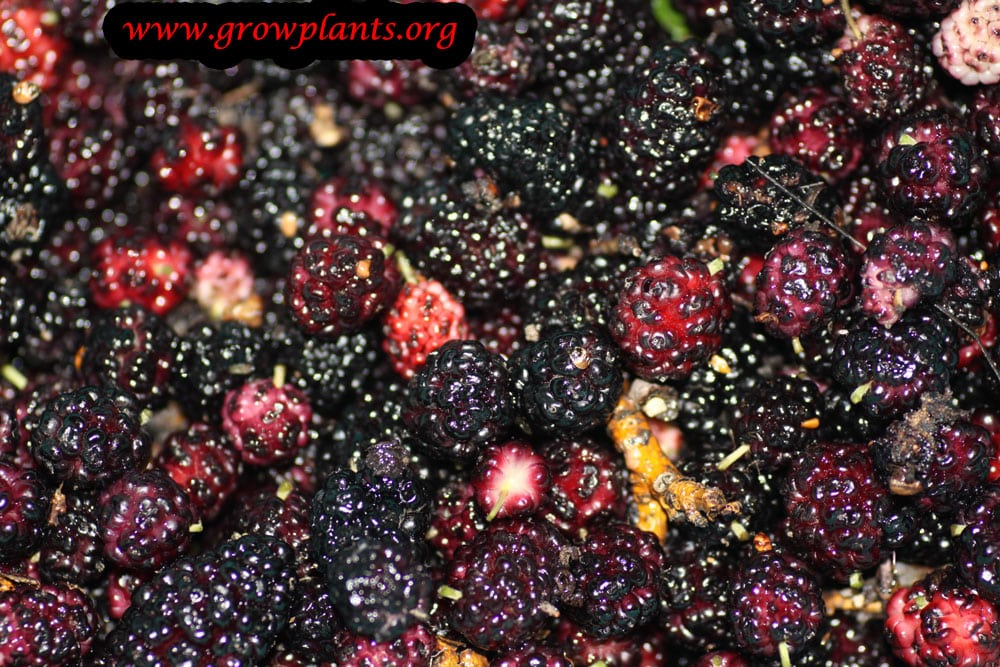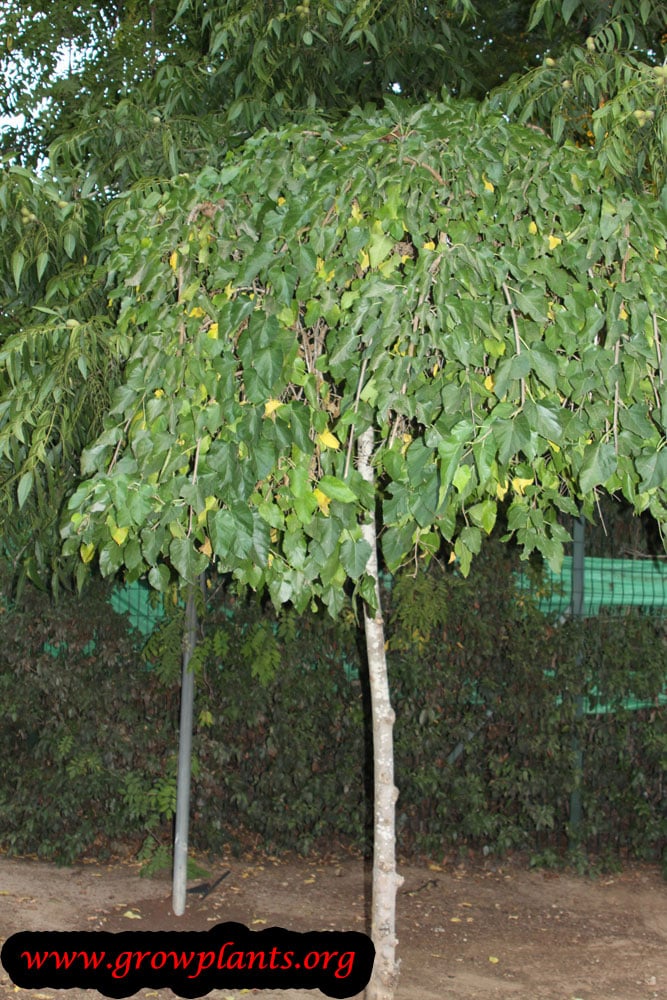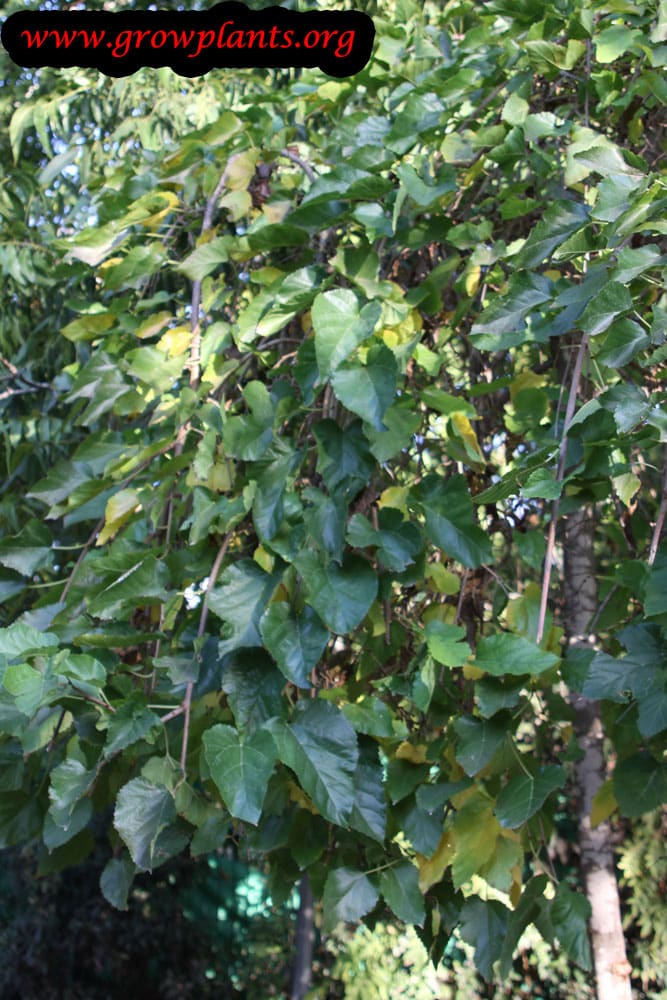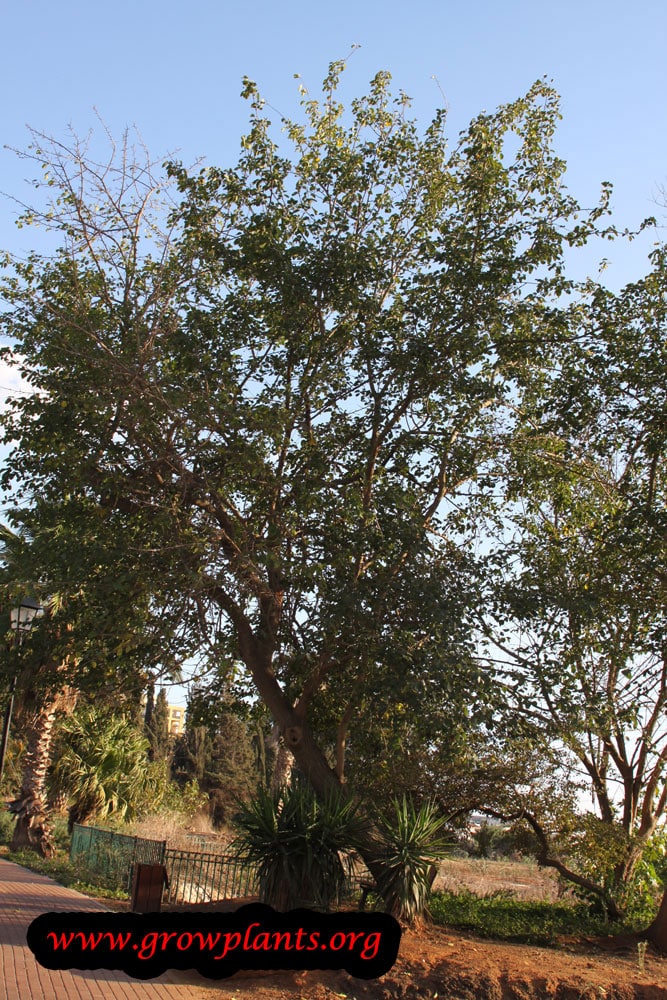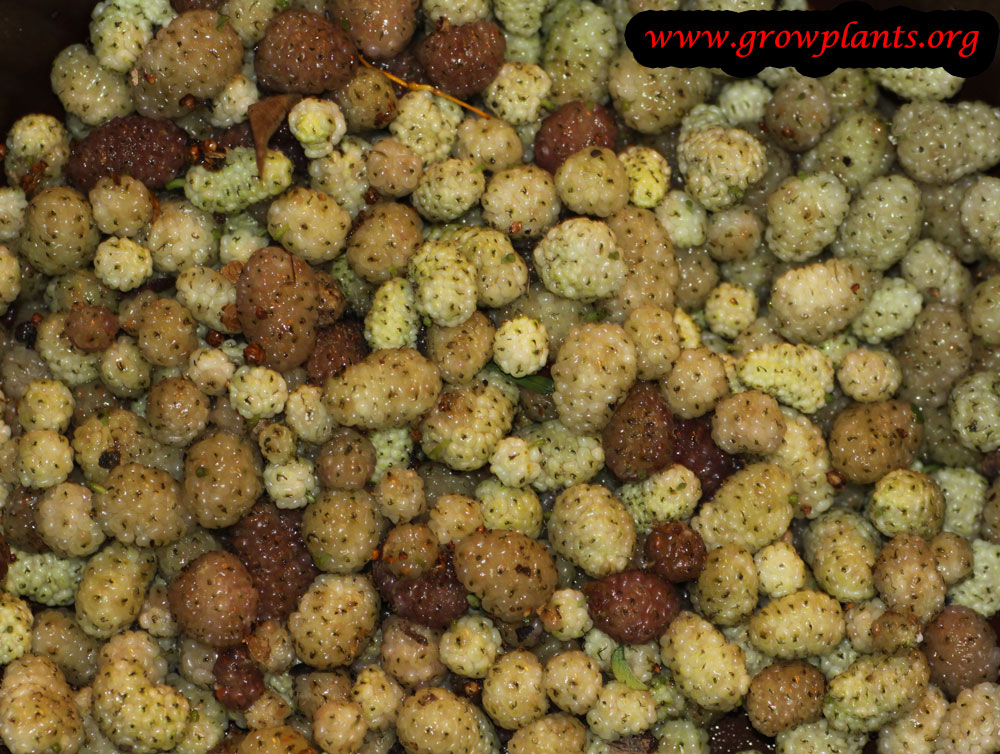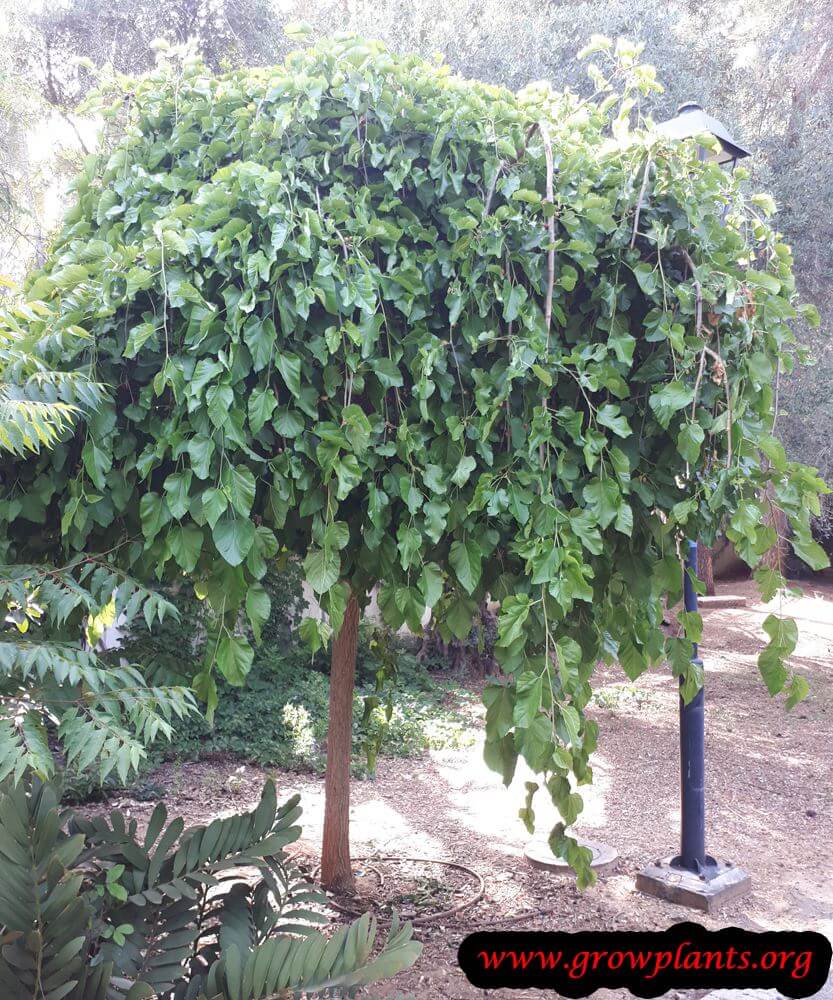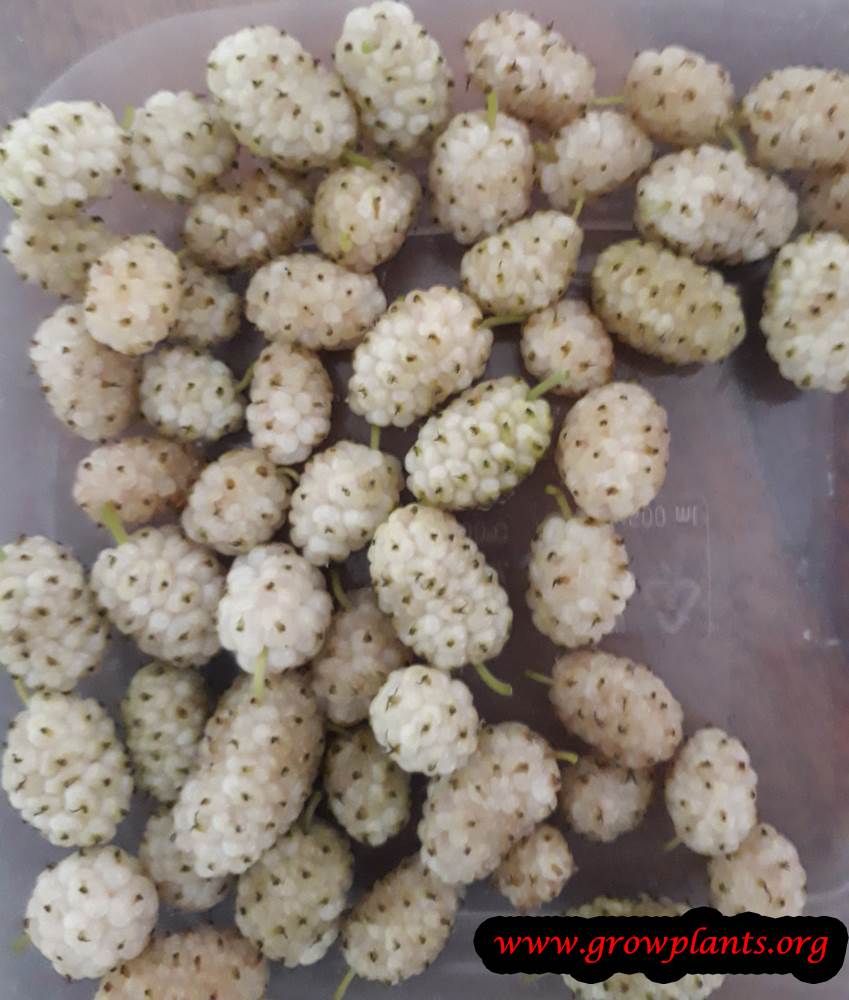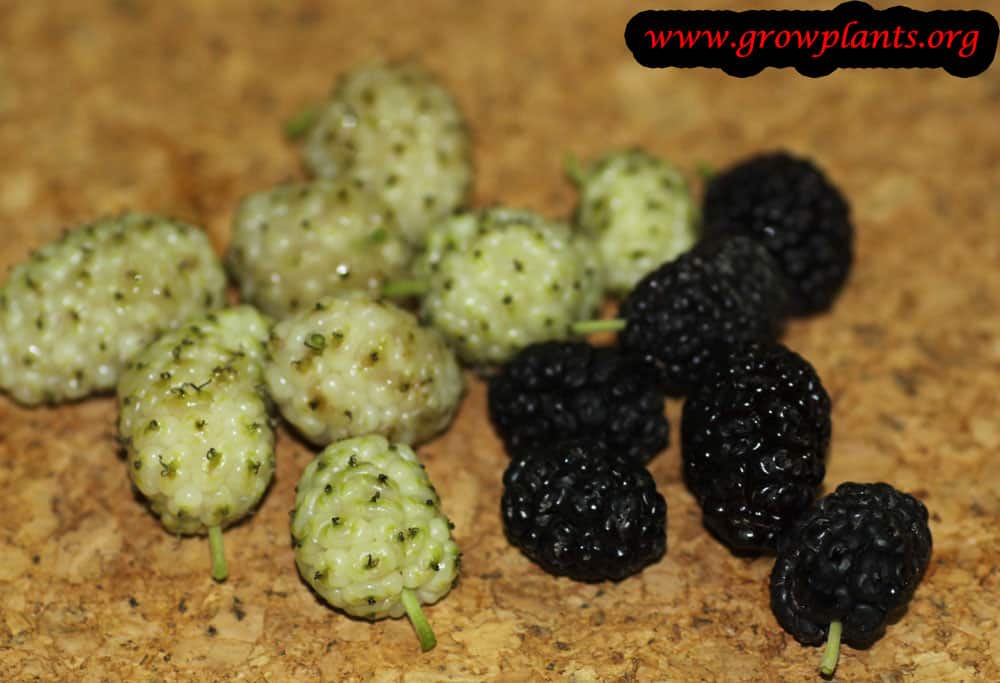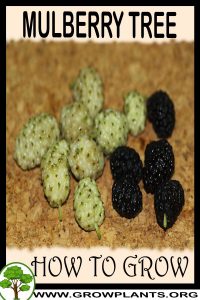
Mulberry tree grow and care – tree of the genus Murus also known as Mulberries, Mulberry tree is perennial deciduous plant grow for the edible fruits and also used as ornamental plants for shade, bonsai or for the weeping variety, can grow in temperate, subtropical or mediterranean climate and growing in hardiness zone 5-10 also possible to grow in hardiness zone 11a in the right care.
Leaves color green in oval to heart shape, the leaves attract larva of silkworm
Flower color is white, small flowers grow in groups that connected to each other in cone shape, most of the trees in the mulberry genus are separate to female and male flowers that grow on separate trees,
Mulberry fruits
Fruit mulberry assembled from small cells (fruit) that make cone shape 1-12cm (0.5-5 inches), the mulberries color can be: white, red, pink, purple dark to light, black
Mulberry tree for sale – Seeds or Plants to Buy
How to grow Mulberry tree – growing condition and care:
Add water in the fruit season if there are not rains, male and female trees possible to graft on the same tree
What is the best way to start growing?
Plant / Vegetative Reproduction by cutting or air layering / Seeds (care explanation bellow)
Is it necessary to graft or use vegetative reproduction?
No, but it insure female tree with high quality of fruits, type of fruits that can be choose: color of the fruits, taste more sweet to sour, some cultivars can be weeping, dwarf, small fruits to big, if there aren’t male tree in the area possible to graft on the same tree
Difficulties or problems when growing:
The fruit make a lot of dirt, attract a lot of insect
Planting season:
Winter to summer, but better to plant in the winter to the early spring, the tree will establish and grow better
How to plant:
Dig a hole as deep as the current root ball plus extra 100-200%, put in the hole organic matter, hummus and dried leaves and mix it with some soil, put the tree and loos little bit the root ball above the hole, plant the tree and cover it and don’t push the soil too much strong but not too much lightly because it won’t be stable, after this put mulch to keep moist on soil, put water, for the next two weeks put every day (better in the morning) , better to take that the tree will be stable, and if not support it with bamboo or a stick that it won’t fall.
Pests and diseases:
Silk worm, aphids, spider mites
Pruning season:
End of autumn to mid of the winter
How to prune:
Recommend to keep the tree short, easy to manage the big amount of fruits, also prune weak branches
Size of the plant:
3-20 m, 10-60 feet, possible to grow as dwarf or bonsai
Growth speed in optimal condition:
Fast growing / Medium growing
Water requirement:
Small amount of water to big amount of water, if watering too much the taste of the fruits become tasteless
Light conditions in optimal condition for growing:
Full Sun to half shade in hardiness zone 11a
Is it possible to grow indoor as houseplant?
No
Growing is also possible in a planter /flowerpot / containers:
Yes, in containers need to keep the plants small, start with pot that will be 70-100% more than the root ball, bigger the plant smaller the percentage, every time that the tree arrive to full capacity need to switch to bigger until arrives to desirable size, better to use this method because the soil lose the viability over time and it’s efficient of care for the tree, when the plant big need to switch part of the soil, be aware that you can just put the soil and not change it for years the tree is not spoil and mostly will grow in the condition that given, , drainage it’s important and need to make holes and to use peat soil, put a bottom for the container and when water the plant let it fill the bottom but also need to dry in the same day
Blooming information
Bloom season:
Spring in hardiness zone 5-10a, end of the winter to early spring in hardiness zone 10b-11a
General information about the flower
Small white flower that connected to each other in cone shape
Thinning the bloom:
Just the first year should thinning
Pollination is done by:
Bees, fly
Edible Fruits
Fruit harvest season:
Late spring to summer in hardiness zone 10a, summer in hardiness zone 5-9, spring in hardiness zone 10b-11a
Fruits pests or diseases:
Birds, fruit fly
What can be done with big quantities of Mulberry fruits?
Eaten raw, jam, juice, cakes, fruits leather
Work requirements on the fruit:
Can be cover with net (not recommend), to make the pick-up easier should put sheet or big nylon
How long does it take to bear fruit?
2 years
How to grow mulberry from seeds
Sowing requirement:
Not recommend starting from seeds although it’s easy
Saving seeds until sowing:
Clean the seeds from fruit pulp, dry, cold area
Sowing season:
End of the winter to spring
Planting spacing:
Pot/container, for transplanting 30*40cm (12-16 inches), directly on the soil for dwarf 3*3m (10*10 feet), regular 5*4m (15*12 feet)
Depth of Sowing:
1 cm (0.5 inch)
Conditions for seeds germinate:
Moist ground, full sun
Watering requires for Seeds:
Average amount of water, keep the soil moist and don’t let it dry
Germination time:
1-7 weeks
Condition of seedling:
Moist, full sun, big amount of water
Do the seeds require burying?
Yes
Chilling Requirements
3-5 weeks of cold, don’t have too much time, maximum temperature ~5C (41F) or colder
Subspecies
Weeping mulberry – size of the fruits 1-4 cm, the color: white, red, pink, purple dark to light, black
White mulberry – size of the fruits 2-5 cm, the color: white, red, pink, purple dark to light, black
Red Mulberry – size of the fruits 2-4 cm, the color: red, light to dark purple dark
Morus nigra – size of the fruits 2-6 cm, the color: dark purple, black
Morus macroura – 7-10 cm, the color: red, purple dark to light, black
Vegetative Reproduction
Vegetative Reproduction Method:
Cutting
Preferred time for vegetative reproduction:
End of the winter early spring
Time to grow roots in vegetative reproduction:
3-4 weeks
Treatment for vegetative reproduction:
Half shade or light, moist, big mount of water, take before the branch grow leaves, keep the branch with high humidity.
Scientific name:
MurusBuy Now in E-bay
How to grow Mucuna pruriens growing and care:
Trellising
What is the best way to start growing?
Plant / Seedling / Seed / Tuber / Bulb/ Vegetative Reproduction
Is it necessary to graft or use vegetative reproduction?
No
Difficulties or problems when growing:
the “velvet” can cause allergic problem
Planting season:
Spring
Pests and diseases:
Larva, aphids
Pruning season:
All season
How to prune:
Just to design
Size of the plant:
5-15 m, 15-45 feet
Growth speed in optimal condition:
Fast growing
Water requirement:
Average amount of water
Light conditions in optimal condition for growing:
Full Sun
Is it possible to grow indoor as houseplant?
No
Growing is also possible in a planter, flowerpot or containers:
Yes
Blooming information
Bloom season?
Spring / Summer
General information about the flower:
Black-purple flowers grow in the shape of butterfly the flowers grow on stem in inflorescence
Pollination is done by:
Bees
Edible seeds
Seeds harvest season:
Spring / Summer / Autumn
Seeds pests or diseases:
Birds
What can be done with big quantities of Mucuna pruriens seeds?
Cooked, stew
Work requirements on the seeds:
For the beans it’s to pick them before it start to fall on the floor
How long does it take to bear seeds?
Start to bear pods after 2 month
Scientific name:
Mucuna pruriens
Categories
| Blooming Seasons |
|
|---|---|
| Edible Parts |
|
| Culinary uses |
|
| Flower colors |
|
| Climate |
|
| Harvest Season |
|
| Ornamental parts |
|
| Plant growing speed |
|
| Plant life-form |
|
| Plant Uses |
|
| Planting Season |
|
| Plants sun exposure |
|
| Watering plants |
|
| Hardiness zone |
|


